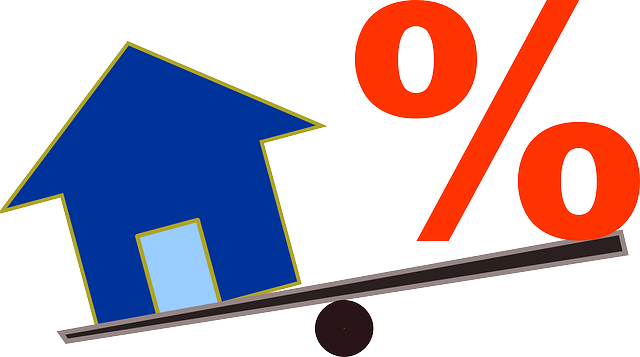This text compares secured and unsecured loans, focusing on their roles in Debt Consolidation. Secured loans, backed by assets like real estate or cars, offer lower interest rates and flexible terms but carry the risk of asset forfeiture upon default. Unsecured loans lack collateral, providing quicker access but typically with higher interest rates. Debt Consolidation Loans leverage these loan types to simplify repayment: secured for long-term stability and lower rates, unsecured for flexibility despite higher costs. Understanding these differences is crucial for borrowers seeking to manage their debt effectively through consolidation.
Understanding the difference between secured and unsecured loans is crucial for making informed financial decisions. This article delves into these two loan types, explaining their unique characteristics, benefits, and drawbacks. Secured loans, backed by collateral, offer lower interest rates but carry risks, while unsecured loans provide flexibility with no collateral needed but may have higher rates.
We explore real-world use cases, including debt consolidation options, to help you choose the best loan type for your financial goals.
Understanding Secured and Unsecured Loans
Secured and unsecured loans are two common types of financial instruments that serve different purposes for borrowers. Secured loans, as the name suggests, are backed by a form of collateral, such as real estate or vehicles. This collateral acts as a safety net for the lender, providing them with a means to recover the loan amount in case the borrower defaults on repayments. This type of loan often comes with lower interest rates and more flexible terms, making it an attractive option for individuals looking to borrow larger sums, like Debt Consolidation Loans.
Unsecured loans, on the other hand, do not require any collateral. Lenders rely solely on the borrower’s creditworthiness and repayment history to assess risk. While this means a higher lending risk for lenders, unsecured loans are typically more accessible and faster to secure. They are suitable for smaller borrowings or short-term financial needs. These loans can be useful when you’re considering options for debt management or personal expenses without tying up an asset as collateral.
How Secured Loans Work
Secured loans are a type of financing where the borrower offers an asset as collateral to secure the loan. This asset can be anything of value, such as real estate, vehicles, or even savings accounts. The lender uses this collateral as a form of insurance against default, which often leads to lower interest rates and more flexible repayment terms compared to unsecured loans. In the event that the borrower fails to repay the loan, the lender has the legal right to seize and sell the collateral to recover their losses. This makes secured loans an attractive option for individuals looking to consolidate debt, as they can potentially obtain better terms and conditions than with traditional unsecured debt consolidation loans.
For instance, someone seeking debt consolidation loans might use their home equity or a car title as collateral. The lender then provides a loan amount based on the value of this asset, allowing the borrower to combine multiple debts into one manageable repayment with possibly lower interest rates. This process simplifies financial management and can help individuals get out of debt faster by consolidating high-interest loans into a single, more affordable payment.
The Mechanics of Unsecured Debt
When it comes to unsecured debt, the concept is quite straightforward. Unlike secured loans that require collateral—such as your home or car—unsecured loans don’t need any assets as a form of guarantee. This means if you fail to repay the loan, the lender has no legal right to seize any of your possessions. Instead, they rely on your creditworthiness and ability to make repayments based solely on your promise to do so.
Unsecured debt is often seen as a convenient option for those looking for Debt Consolidation Loans. It allows individuals to combine multiple debts into a single loan with potentially lower interest rates, making repayment more manageable. However, it’s important to note that this type of loan comes with higher interest rates compared to secured loans because there’s no collateral to mitigate the lender’s risk.
Advantages and Disadvantages: A Comparison
Advantages and Disadvantages: A Comparison
Secured loans offer several advantages, particularly for individuals looking to consolidate debt. The primary benefit is access to lower interest rates due to the collateral—typically a valuable asset like real estate or a vehicle. This makes them an attractive option for long-term borrowing, as the fixed interest rate can protect borrowers from future rate hikes. Additionally, secured loans often come with larger borrowing limits, catering to substantial debt consolidation needs. However, the main disadvantage lies in the risk of asset loss if the borrower defaults on payments, as the lender has legal rights over the collateral.
Unsecured loans, on the other hand, provide flexibility without the burden of collateral. They are ideal for those with limited assets or who prefer not to risk them. Unsecured debt consolidation loans can be approved based on creditworthiness alone, making them accessible to a broader range of borrowers. However, this convenience comes at a cost—higher interest rates and potentially lower borrowing limits. Moreover, the absence of collateral means lenders may offer shorter repayment periods, putting more immediate pressure on borrowers to repay.
Use Cases: When to Choose Each Type
Debt Consolidation with Secured vs Unsecured Loans
When deciding between secured and unsecured loans for debt consolidation, understanding the unique characteristics of each is key. Secured loans offer lower interest rates and require collateral, making them ideal for those with assets to pledge. Unsecured loans, lacking this requirement, provide flexibility but typically carry higher rates. The choice depends on your financial situation and risk tolerance. Securely consolidating debt with a secured loan can save you money in the long run, while unsecured options offer convenience and simplicity. Whichever path you choose, it’s essential to carefully consider your options and select the approach that aligns best with your financial goals and circumstances.
